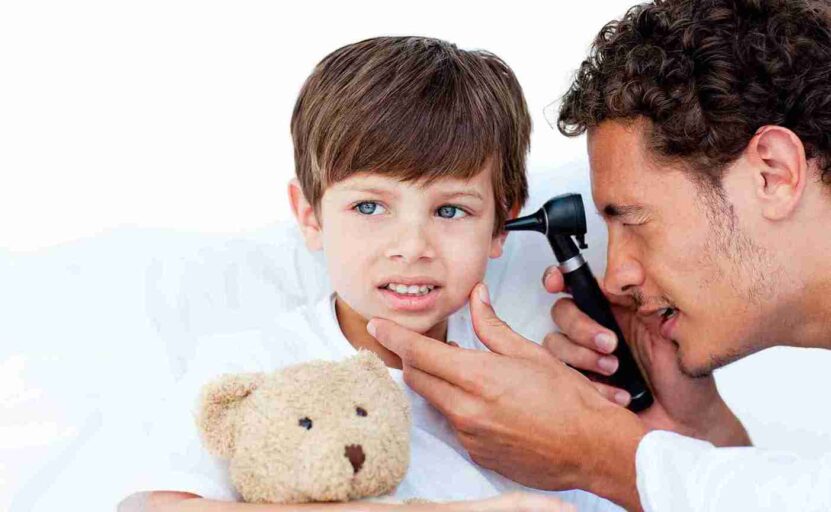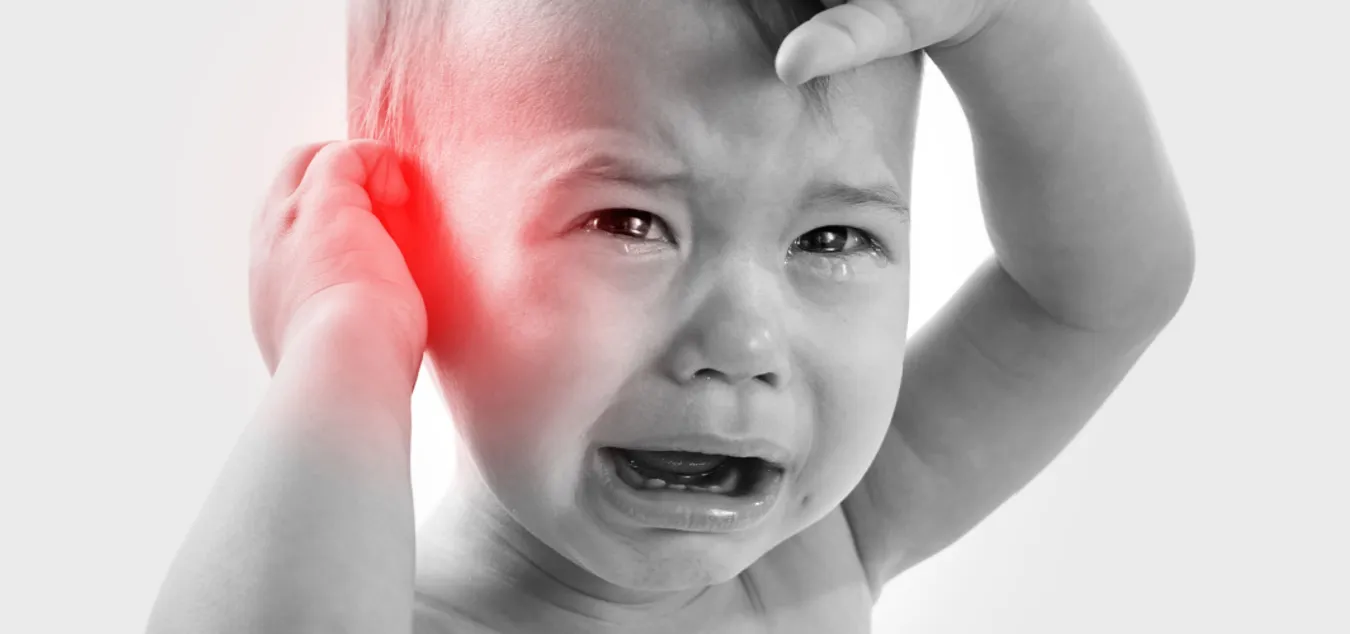Parents know the uneasy feeling that comes when their baby is suddenly fussy, restless, or running a mild fever. While teething and colds are common culprits, ear infections are often overlooked in the early stages.
Ear infections in babies progress quickly. What starts as mild discomfort can become a painful condition within hours. Pediatric specialists stress that untreated infections risk complications, from hearing difficulties to repeated recurrences.
Parents who learn to notice the cues, both obvious and quiet, are often the ones who avoid sleepless nights, emergency visits, and extended recovery.
Common Behavioral Signs Parents Should Watch For
Babies express discomfort through behavior before visible symptoms appear. Watch for patterns that seem “out of character” for your child.
- Irritability and restlessness: If your baby is unusually fussy or difficult to soothe, especially at night, it may signal discomfort.
- Frequent tugging or rubbing of the ears: Babies often pull on the ear when they feel pressure or pain inside.
- Crying during feeding: The act of sucking and swallowing can create pressure shifts that intensify ear pain.
- Changes in sleep: Ear infections often worsen when a child lies flat, making it harder to rest peacefully.
These are not definitive signs on their own but, when paired together, they should prompt closer attention.
Parents often balance instinct with research. They frequently turn to online health checkers to understand symptoms better. While digital guides never replace professional diagnosis, they help parents organize observations before contacting a pediatrician. Some even use platforms like detector de ia to differentiate between credible medical articles and content generated by unreliable sources. This adds another layer of safety, ensuring that the information shaping your decision-making is trustworthy.
Advice is to always trust your pediatrician first and foremost. And not to rely on online info.

Physical Symptoms That Signal an Ear Infection
In addition to behavior, some physical cues are worth monitoring.
- Fever: A temperature above 38°C (100.4°F) often accompanies infections, including those in the ear.
- Drainage: Pus or clear fluid from the ear can indicate a ruptured eardrum, requiring urgent attention.
- Balance issues: Since the inner ear influences equilibrium, babies may appear unsteady when crawling or trying to stand.
- Reduced responsiveness to sounds: If your baby seems less alert to voices or toys that make noise, hearing may be temporarily affected.
These physical symptoms, combined with behavioral changes, provide a clearer picture of what is happening inside the ear.
Comparing Ear Infections with Other Common Baby Issues
Parents often confuse ear infections with teething or common colds. A quick comparison helps separate the likely causes.
| Symptom | Teething | Common Cold | Ear Infection |
| Drooling | Frequent | Sometimes | Rare |
| Runny Nose | Sometimes | Common | Sometimes |
| Ear Pulling | Occasional distraction | Rare | Frequent and persistent |
| Fever | Low-grade (below 38°C) | Low to moderate | Moderate to high |
| Sleep Disruption | Mild | Mild to moderate | Severe, often worse at night |
When you can differentiate between these scenarios, you reduce unnecessary worry and know when to call your pediatrician.
How Doctors Diagnose Ear Infections
Once you bring your child to a healthcare professional, diagnosis usually involves:
- Medical history review: Discussing recent colds, allergies, or feeding changes.
- Physical exam: Using an otoscope to check for redness, swelling, or fluid behind the eardrum.
- Hearing check (in some cases): Ensuring no short-term loss has occurred.
For parents, the important part is documenting observations – when the fussiness began, if fever was present, or how feeding changed. These details help the pediatrician provide faster and more precise treatment.
Ear infections often follow upper respiratory infections. A simple cold may seem harmless, but congestion can block the ear canal and trap fluid. This creates the perfect environment for bacteria or viruses to grow.

Preventive Measures Parents Can Take
Prevention does not eliminate risk entirely, but it reduces frequency and severity.
- Breastfeeding when possible: Antibodies in breast milk help strengthen immunity.
- Upright feeding positions: Avoid letting milk pool in the baby’s mouth, which can flow toward the ear canal.
- Vaccinations: Following recommended schedules helps protect against infections that may trigger ear problems.
- Avoiding smoke exposure: Secondhand smoke is a known risk factor for recurrent ear infections.
Each of these small steps contributes to healthier ear function and reduces your baby’s discomfort over time.
Treatment Approaches ─ From Home Comfort to Medical Care
Not all ear infections require antibiotics. Pediatricians often monitor mild cases to see if they resolve naturally within a few days. Parents, however, can focus on comfort measures at home:
- Warm compresses on the affected ear can ease pain.
- Age-appropriate pain relievers (approved by the doctor) may help reduce fever and discomfort.
- Hydration and rest keep the body stronger while fighting infection.
If antibiotics are prescribed, follow the full course to prevent resistance or recurrence. Quick relief may tempt stopping early, but consistency is crucial.
When to Call the Doctor Immediately

While many infections are manageable, some require urgent attention. Contact a healthcare provider right away if:
- Fever exceeds 39°C (102.2°F).
- There is discharge from the ear.
- Your baby appears unusually drowsy or unresponsive.
- Symptoms worsen or fail to improve after two to three days.
Timeliness makes a difference. Babies are resilient, but their systems are delicate, and infections spread fast.
Final Thoughts
Parents often feel helpless when their baby is in pain. It is natural to worry about doing “enough” or missing signs. Remember, no parent catches everything instantly. What matters most is attentiveness, documenting changes, and seeking care without hesitation. The process becomes easier once you learn to trust both your instincts and professional advice.
Your role is not only to ease discomfort but also to protect your baby’s long-term health. The more familiar you become with these patterns, the more confident you’ll feel in handling them. Ear infections may be common, but with careful eyes and responsive action, they don’t have to become a recurring struggle.

